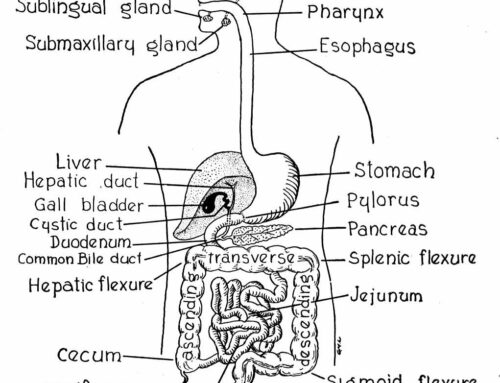Ever wonder why your digestion never seems just quite right? Well, as much as we don’t like to admit it we are exposed to and host all sorts of critters within our own bodies. Lots of times when your doctor can’t figure out what is wrong with you or they tell you it is in your head, it may likely be something else such as parasites, yeast/fungi/mold, viruses, or bacteria that are taking over your body and causing you a variety of symptoms.
Typical symptoms include: Allergies, anemia, asthma, bloating, chronic fatigue, constipation, Crohn’s disease, diarrhea, enlarged liver or spleen, flu-like symptoms that persist, gas, headaches, immune problems, irritable bowel, unexplained joint and muscle aches, skin problems, sleep disturbances, and teeth grinding can signal parasites, which masquerade so easily as other disorders. Some people will experience secondary gluten and/or lactose intolerance, so add food sensitivities to the list above.
I had a client diagnosed with Crohn’s and a gluten sensitivity and we discovered parasites. They used anti-parasitic herbs and homeopathics to get rid of the parasites, healed their digestive tracts, no more gluten issues, and are now perfectly healthy.
The rest of this article will focus specifically on parasites as typically they are not treated correctly by main stream medicine and have lingering and sometimes long-term effects. I worked with one client who had diarrhea for over two years with no support from her regular doctor or the GI doctor. In one week, the diarrhea was gone and in several months the parasite issue was resolved.
What makes parasites so nasty? First, they cause physical trauma to the body, particularly worms. They destroy cells in the body faster than cells can be regenerated. This results in ulceration, perforation, or anemia. Remember, parasites must eat, so they take away our own nutrients – vitamins, minerals, and amino acids – so they can live. Many people will become anemic and fatigued due to this. Not only do they eat, but they poop! They produce toxic waste materials that are harmful to your body. These wastes trigger the immune system leading to increased pain and inflammation.
They irritate bodily tissues, resulting in an inflammatory response from the body. This over time depresses the functionality of the immune system. The actual size and/or weight of the parasitic cysts cause pressure on nerves and organs. They may also cause obstructions, all resulting in malfunctioning of the body’s systems. They can lump together and form a ball, that acts like a tumor. Several years ago, there was a story of a woman from Arizona who they thought had a brain tumor. When they went to remove the “tumor” they found a long worm!
While parasites have always been around, it seems they are even more prevalent today. There are several reasons for this. First there is the international factor. There is an increase in international travel, an increase of refugee and immigrant populations from endemic areas, and an increase in the return of military personnel from overseas. Associated with this is the increasing popularity of exotic regional foods. All these factors bring “new” parasites into our environment. I’ve had clients get parasites in Mexico, Columbia, and Israel.
Within our own daily living there is the contamination of water supplies – both municipal and rural; the increasing use of day care centers – for both children and adults, and the continued popularity of household pets. I’ve had clients get parasites from swimming in rivers and lakes. These are all places where parasites can survive. In addition, the increasing consumption of processed and sugar-laden foods and the use of antibiotics and immunosuppressive drugs have suppressed our immune system’s ability to fight off parasites.
For a quick parasite primer, we’ll start with the smallest guys – the protozoa. They account for 70% of all parasites and cannot be seen by the naked eye. They are single celled microscopic organisms that can take over the GI tract and from there migrate to other body organs and tissues. An estimated 7 million people have some form of protozoa living inside of them.
One of them is Entamoeba histolytica which causes a disease called amoebiasis. It mainly infects humans and other primates. It is found in water, damp environments and in soil, so it can contaminate fruits and vegetables. It spreads through fecal contamination. Other than the malarial parasite, it causes more deaths than any other protozoan. It is also very difficult to detect as it makes its way from the digestive tract to the lymph nodes and liver and even cause death. Some strains have become drug resistant and it can produce an autoimmune reaction. Symptoms include abdominal pain, weight loss, weakness, diarrhea, and liver abscesses.
Toxoplasma is another common parasite. This crescent shaped parasite will invade our central nervous system. We can become infected by eating undercooked meat or by handling infected cat litter. The cysts of toxoplasma are passed through cat feces. They become infectious within three to four days, but remain viable for up to 18 months! An acute infection is like mono. Chronic symptoms include hepatitis and lymph problems like Hodgkin’s in the host.
It is estimated that 50% of the US adult population may be carrying a latent toxoplasma infection. Those with a compromised immune system are even more susceptible. Also of greater risk are fetuses as they can suffer serious or fatal effects from infection. Typical symptoms include flu-like symptoms, fever, chills, fatigue, and headache.
Next come the worm family. It should be noted that unless the worm infestation is heavy, most people will not show symptoms of any disease. The smallest of these is the pinworm. It is the most common of all worms in the US and most prevalent in children. Contamination comes from food, water, bedding, house dust, and human contact. While anal itching is the most classic signal, these worms also produce many behavioral and neurological symptoms including hyperactivity and vision problems.
Adult females range from 8 to 13 millimeters in length and have a long, pin-shaped posterior, for which the worm is named. They make their home in the host’s intestines, but unlike many parasites they do not pass into the blood and cannot survive in other parts of the body for any length of time. They lay their eggs outside the body, usually around the anus, causing itching: this assists the larvae’s spread via hand contact.
The most common intestinal parasite in the world is the large roundworm. It is estimated that 1 billion people worldwide are infected. Children are also prone to this infection. It is spread through soil, food, and feces. They are transferred by ingestion. The eggs hatch and quickly penetrate the intestinal wall, where they enter the bloodstream. From there, the roundworm makes its way to the lungs, from where it is coughed up and swallowed, returning it to the gut. Symptoms include fever, tiredness, allergic rash, vomiting, diarrhea, nerve problems, and wheezing / coughing.
Next come the larger worms of the cestoda family. These include the tapeworms found in beef, pork, fish, and dog. Pictured here is the pork tapeworm. These are among the oldest known parasites and the largest. They can grow up to 36 inches! They each have a “head” that attaches to the intestinal wall. As long as the head remains attached, a new worm can grow from it. They are transmitted through infected food. A tapeworm attaches itself to its victim’s intestine with hooks on its “head”, or scolex. They mature over three to four months, during which time the reproductive organs develop and can survive for up to 25 years in humans. Tapeworms lack their own digestive tract so utilize that of the host.
Their eggs are excreted in feces and can survive on vegetation, where they are then consumed by cattle or pigs, and passed on to humans. It can be spread by kissing your dog and eating undercooked meat or fish. While this parasite doesn’t always produce symptoms, allergies, bloating and gas, dizziness, “fuzzy” thinking, hunger pains, mineral imbalance, nausea, vomiting, inflammation of the intestine, diarrhea, weight loss, dizziness, fits, malnutrition, and sensitivity to touch can signal this worm.
Last, but not least is the trematoda family – these are leaf-shaped flatworms, also known as flukes. There are blood flukes, liver flukes, lung flukes, and intestinal flukes. The name corresponds to the organ that they settle in. These originate life in the water.
The blood fluke lives in the bloodstream of infected hosts and cause schistosomiasis, also called bilharzia. They live in water, and penetrate the skin of victims who come into contact with contaminated water plus eating undercooked fish and contaminated produce. The parasite causes inflammation (swelling) and damage to organs, particularly the liver. The adult worms can persist in their human host for decades (up to 30 years), and may not cause any symptoms for years. They leave the host in feces and spend part of their lifecycle in a snail host. Symptoms include: fever, aching, cough, diarrhea, swollen glands, lethargy, depression, edema, enlarged liver, pain on the right side, vertigo, and even cancer.
As you can see there is quite a variety of parasites and they can be responsible for a variety of health issues. I see this all the time in my practice and fortunately have been able to help many clients regain their health.
Bernard Rosen, PhD is a Nutrition Consultant and Educator. He works with individuals, groups, and at corporations to create individualized nutrition and wellness programs. His office is in Mequon, WI. To learn more or to schedule an appointment, e-mail at bernie@brwellness.com, call (262) 389-9907 or go to www.brwellness.com.







